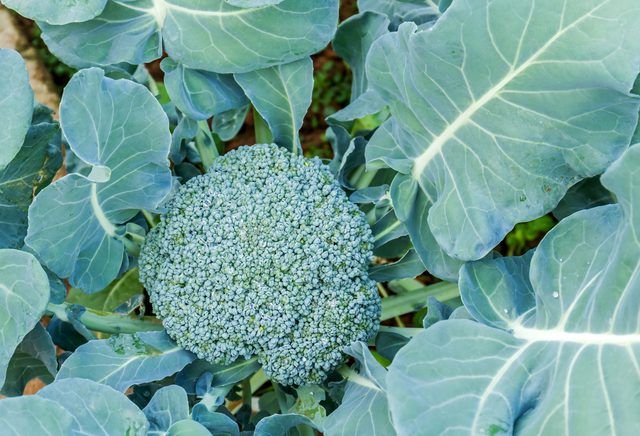Bulbs
Flower Basics
Flower Beds & Specialty Gardens
Flower Garden
Garden Furniture
Garden Gnomes
Garden Seeds
Garden Sheds
Garden Statues
Garden Tools & Supplies
Gardening Basics
Green & Organic
Groundcovers & Vines
Growing Annuals
Growing Basil
Growing Beans
Growing Berries
Growing Blueberries
Growing Cactus
Growing Corn
Growing Cotton
Growing Edibles
Growing Flowers
Growing Garlic
Growing Grapes
Growing Grass
Growing Herbs
Growing Jasmine
Growing Mint
Growing Mushrooms
Orchids
Growing Peanuts
Growing Perennials
Growing Plants
Growing Rosemary
Growing Roses
Growing Strawberries
Growing Sunflowers
Growing Thyme
Growing Tomatoes
Growing Tulips
Growing Vegetables
Herb Basics
Herb Garden
Indoor Growing
Landscaping Basics
Landscaping Patios
Landscaping Plants
Landscaping Shrubs
Landscaping Trees
Landscaping Walks & Pathways
Lawn Basics
Lawn Maintenance
Lawn Mowers
Lawn Ornaments
Lawn Planting
Lawn Tools
Outdoor Growing
Overall Landscape Planning
Pests, Weeds & Problems
Plant Basics
Rock Garden
Rose Garden
Shrubs
Soil
Specialty Gardens
Trees
Vegetable Garden
Yard Maintenance
Types of Broccoli
Broccoli comes in several types, not just the common supermarket model -- from large, domed heads to leafy, non-heading types.

Common broccoli (Brassica oleracea, Italica group) found in most supermarkets represents just one of the broccoli types available to adventurous gardeners. These cool-season vegetables are grown as annuals throughout all U.S. Department of Agriculture plant hardiness zones. Size and type of head, branching habit, botanical background and, in some cases, whether there's a head at all, distinguish the various main types of broccoli.
Large-Head Broccoli
Though head size varies among large-head broccoli (Brassica oleracea var. italica), these full, domed types are the classic broccoli familiar to most consumers and widely grown for commercial production. Large-head broccoli varieties differ in heat and cold tolerance, preferred growing season, times to maturity and the size of unopened florets. They even come in miniatures, but all have the same full, domed form. Some examples of large-head broccoli varieties include:
'Gypsy' broccoli (Brassica oleracea var. italica 'Gypsy') is known for excellent performance in poor soils, heat tolerance and disease resistance. After the main head is harvested, side-shoot heads form.
'Arcadia' broccoli (Brassica oleracea var. italica 'Arcadia') has exceptional cold tolerance and does well in winter in four-season gardens. It bears large, firm, domed heads and produces side-shoot heads, too.
'Munchkin' broccoli (Brassica oleracea var. italica 'Munchkin')is a dwarf variety that stays a near 12 inches tall with full, blue-green heads. It's perfect for small-space gardens.
Broccoli Raab
Rather than forming a central head, broccoli raab types (Brassica rapa var. ruvo) branch and form multiple small heads instead. Leaves, stems and heads remain tender and have a pleasantly bitter, peppery taste. Harvest them just as the edible flowers open. These vigorous broccolis are sometimes called "asparagus broccoli" after their asparaguslike shoots. Some examples include:
'Sessantina Grossa' broccoli (Brassica rapa var. rupo 'Sessantina Grossa') is an early cropping raab known for its thick, tender stems and buds.
'Spring Raab' broccoli (Brassica rapa var. ruvo 'Spring Raab') is a versatile, late-maturing raab that produces well over winter in mild climates.
Sprouting Broccoli
Grown primarily for its tender sprouts and their small, tender, loose florets, sprouting broccoli (Brassica oleracea var. italica) come in green and purple varieties. Cook them as you would asparagus (Asparagus officinalis, USDA zones 4 through 8), but don't be surprised when the purple sprouts turn green. Some examples include:
'Santee' broccoli (Brassica oleracea var. italica 'Santee') offers sweet, tender green stems and purple florets. Less heat tolerant than some other broccolis, it does best as a fall-season crop.
'Purple Peacock' broccoli (Brassica oleracea 'Purple Peacock') is a cross between broccoli and kale (Brassica oleracea, Acephala group) with finely cut, purple-veined leaves and extra-tender purple florets.
Chinese Broccoli
Also known as Chinese kale or gai lan (Brassica oleracea x gailon), this Asian broccoli has a distinctive flavor, longer stems, darker color and florets that resemble mini-heads. The entire plant is eaten, from flowers to stems and leaves. Some varieties include the following:
'Happy Rich' Chinese broccoli (Brassica oleracea x gailon 'Happy Rich') is a vigorous, upright plant with extra-large florets.
'Green Lance' Chinese broccoli (Brassica oleracea x gailon 'Green Lance') is a versatile broccoli with minimal florets backed by thick, tender, upright stems.
Leaf Broccoli
Also known as spigariello, leaf broccolis (Brassica oleracea) are similar to raab but offer a sweeter, broccoli-kale flavor. Grown specifically for their leaves, they'll eventually form very small heads -- if they ever get the chance. The more you harvest, the more leaf broccolis produce. Some varieties include:
'Spigariello Liscia' broccoli (Brassica oleracea 'Spigariello Liscia') is known for tender leaves and sweet flavor favored in Italian kitchens.
'Minestra Nera' broccoli (Brassica oleracea 'Minestra Nera') has beautiful blue-green, broccoli-flavored leaves with wavy margins.
Tip
Broccolis are cool-season vegetables that grow best in the cool temperatures of spring and fall. Most can be grown as double crops -- one in spring and one in fall. Give broccolis full sun, well-drained soil and consistent moisture for the best results.